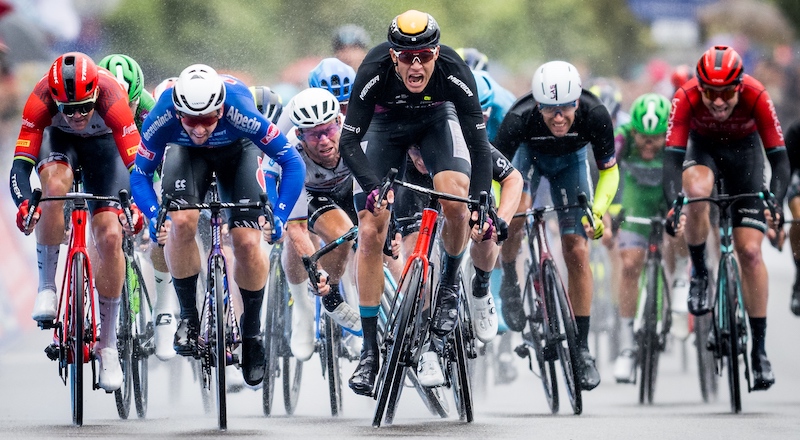Wednesday’s stage of the Giro d’Italia was won by the Australian sprinter Kaden Groves. And even Thursday’s stage, with start and finish in Naples, could end in a sprint. However, stages of this type are becoming rarer in contemporary cycling. And even when there are, they generally arrive after eventful stages, with climbs and routes that make the sprint a probable outcome but not, as often happened until one or two decades ago, something practically certain and almost even inevitable.
It’s happening at the Giro d’Italia, but also at the Tour de France, and you see it in several one-day races as well. This trend is making the lives of sprinters increasingly difficult, i.e. runners like Mario Cipollini, Alessandro Petacchi or Elia Viviani, who have a great fast starting point to exploit in the last few hundred meters of a generally flat and straight finish.
“The times are long gone” had written The Team at the beginning of the year “in which the first week of the Tour de France was made up entirely of stages as flat as lakes, which in 1999 allowed Cipollini to win four stages in a row already in the early days”. And already at the end of 2022 Viviani, Olympic champion and winner of stages in the Giro, Tour and Vuelta of Spain, He said at the Gazzetta dello Sport “the pure sprinter will disappear.” Between 2003 and 2005 Petacchi, now a Rai commentator, won 24, 21 and 25 sprints per season; while in 2022 the most successful sprinter, the Dutchman Fabio Jakobsen, has won on 12 occasions.
The reasons for this change are diverse and not all recent. First of all there is the fact that, due to what is said to be a different interest of the spectators, and therefore of television and consequently also of those who organize the races and decide the routes, there is an attempt to make fewer stages, all flat and on routes where neither the wind nor certain types of terrain (for example dirt roads or cobblestones) can create great havoc. In short, there are, first of all, fewer stages destined to end with great sprints, and therefore fewer opportunities for the sprinters.
Other factors also play a role, such as the reduction in the number of riders that each team can bring to the Giro or the Tour (there were nine up until a few years ago and now they are eight) and the fact that more and more teams are aiming for the general classification with at least their runner. One of the consequences is that there are fewer places in the team for the sprinters and above all for the riders chosen to assist and guide them in the best possible way, through the so-called “trains” (Cipollini had very effective ones), up to the last meters of the race.
Then there is the fact that, not only as a result of these evolutions, runners and the approach of many of them to racing have changed. Without having significantly changed its course, a great classic like the Milan-San Remo has gone in recent years from being often won by sprinters — Cipollini and Petacchi among others — to being won or at least fought over by very different, that they are only partially sprinters or that they really aren’t.
Partly due to the propensity of certain runners (the Belgian Arnaud De Lie, excellent in the sprint, told the Crew who «hates to be described as someone who waits for the last 200 metres») a bit out of necessity (there are fewer and fewer “pure” and predetermined sprints), in short, the runners had to adapt.
The sprinters of the past, with physiques and skills designed almost exclusively for sprints (especially those at the end of almost completely flat stages) are now increasingly rare, especially among the new generation of cyclists. By now, given that even the stages that end in the sprint do so after hilly routes, with various climbs, the sprinters have had to adapt: they now tend to be more “hybrid” in their qualities, to have different physiquesalso more suitable for climbs, and to be more ductile, that is, capable of adapting to routes and racing evolutions that are not just a group sprint.
Sprints, however, continue to be an integral part of cycling. Already for many kilometers before the finish, they require considerable tactical work and lend themselves to being summarized and analyzed in every detail, albeit with the risk that certain sprints end up being talked about more for falls or accidents than for the their outcome. It happened, for example, after the fifth stage of the Giro d’Italia, which arrived in Salerno after a lot of rain and many crashes with a sprint that, among other things, showed how extreme the sprinter’s work can be.
There is also the fact that, especially during the big stage races, certain flat routes are used: for the organizers to move from area to area, and for certain runners to take a little rest, even if only mental, before or after the stages busier.
– Read also: Fernando Alonso is still a phenomenon
